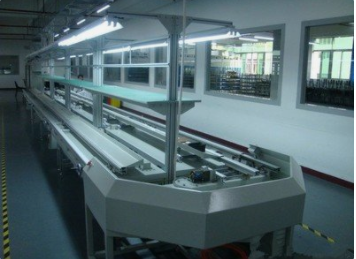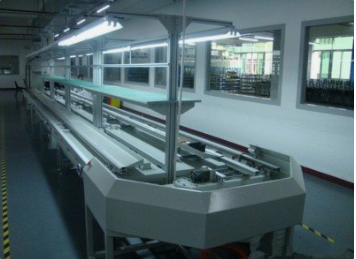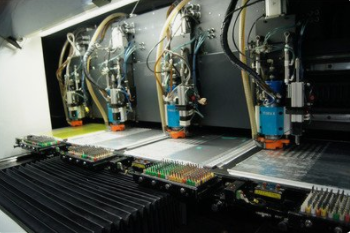
The reliability of electronic equipment will decline, and even electronic equipment will fail due to overheating. Therefore, it is very important to design and deal with the heat dissipation of the PCB circuit board.
The printed circuit board (PCB) is based on the circuit schematic diagram to realize the functions required by the circuit designer. PCB design
includes layout design, in which various factors such as the layout of external connections, the optimal layout of internal electronic components, the optimal layout of metal wiring and through-hole, electromagnetic protection, and heat dissipation need to be considered. Today, I will give you a detailed explanation on the heat dissipation design skills of PCB.

Analysis of temperature rise factors of pcb
The direct cause of PCB temperature rise is the existence of circuit power consumption devices, electronic devices have power consumption in varying degrees, and the heat intensity varies with the power consumption.
Two phenomena of temperature rise in PCB:
(1) Local temperature rise or large area temperature rise
(2) Short time temperature rise or long time temperature rise
The way to improve the temperature rise of PCB needs to be considered in many aspects. Because these factors are often interrelated and dependent in a product and system, most of them should be analyzed according to the actual situation. Only for a specific actual situation can parameters such as temperature rise and power consumption be calculated or estimated correctly.
Circuit board cooling mode
Therefore, in the analysis and design of PCB thermal power consumption, the following aspects are generally used to solve the PCB heat dissipation mode and optimize its design.
1. High heating element plus radiator and heat conduction plate (tube)
When there are a few components in the PCB with large heating capacity (less than 3), a radiator or heat transfer tube can be added to the heating components. When the temperature cannot be reduced, a radiator with a fan can be used to enhance the heat dissipation effect. When there are many heating devices (more than 3), large heat dissipation plates (tubes) can be used. They are special radiators customized according to the position and height of the heating devices on the PCB board or different high and low component positions can be picked out on a large flat panel radiator. Buckle the heat shield onto the element surface as a whole, and contact each element to dissipate heat. However, the heat dissipation effect is not good due to the low consistency of components during assembly and welding. In recent years, soft thermal phase-change heat transfer pads will be added on the surface of some high heat components to improve the heat dissipation effect.
2. Heat dissipation through PCB
At present, PCB boards that are widely used are copper clad/epoxy glass cloth substrate or phenolic resin glass cloth substrate, and there are a few paper based copper clad boards.
Although these substrates have excellent electrical and processing properties, they have poor heat dissipation. As a heat dissipation way for high heating elements, they can hardly be expected to transmit heat from the resin of PCB itself, but to dissipate heat from the surface of the element to the surrounding air. However, as electronic products have entered the era of miniaturization of components, high-density installation and high heating assembly,
It is not enough to rely only on the surface of components with very small surface area for heat dissipation. At the same time, due to the large use of surface mounted components such as QFP and BGA, a large amount of heat generated by the components is transferred to the PCB board. Therefore, the best way to solve heat dissipation is to improve the heat dissipation capacity of the PCB itself in direct contact with the heating elements, which is transmitted or distributed through the PCB board.
3. Adopt reasonable PCB wiring design to realize heat dissipation
Because the resin in the sheet has poor thermal conductivity, and the copper foil lines and holes are good conductors of heat, improving the copper foil residual rate and increasing the thermal conductivity holes are the main means of heat dissipation. To test and evaluate the heat dissipation capability of a PCB, it is necessary to calculate the equivalent thermal conductivity of the insulating substrate for PCB, a composite material composed of various materials with different thermal conductivity.
4. Reasonable and uniform distribution of heat sources
The components on the same printed board shall be arranged in zones as far as possible according to their calorific value and heat dissipation degree. The components with low calorific value or poor heat resistance (such as small signal transistors, small-scale integrated circuits, electrolytic capacitors, etc.) shall be placed at the top (entrance) of the cooling air flow, and the components with high calorific value or good heat resistance (such as power transistors, large-scale integrated circuits, etc.) shall be placed at the bottom of the cooling air flow. Avoid the concentration of hot spots on the PCB, and evenly distribute components with equivalent power on the PCB as much as possible to maintain the uniformity and consistency of PCB surface temperature performance.
5. Use thermal conductive materials to reduce thermal resistance
The thermal resistance between high heat dissipation devices and substrate shall be reduced as much as possible when they are connected. In order to better meet the requirements of thermal characteristics, some thermal conductive materials (such as a layer of thermal conductive silica gel) can be used on the bottom of the chip, and a certain contact area can be maintained for heat dissipation of the device.
6. Connection between PCB device and substrate
(1) Shorten the device lead length as much as possible
(2) When selecting a high power consumption device, the thermal conductivity of the lead material should be considered. If possible, the largest lead cross-section should be selected as far as possible
(3) Select devices with more pins
7. Selection of Packaging Materials forPCB boardDevices
(1) When considering the thermal design, pay attention to the package description of the device and its thermal conductivity
(2) It should be considered to provide a good heat conduction path between the substrate and the device package
(3) Air partition shall be avoided on the heat conduction path, and heat conducting materials can be used for filling if this is the case.






